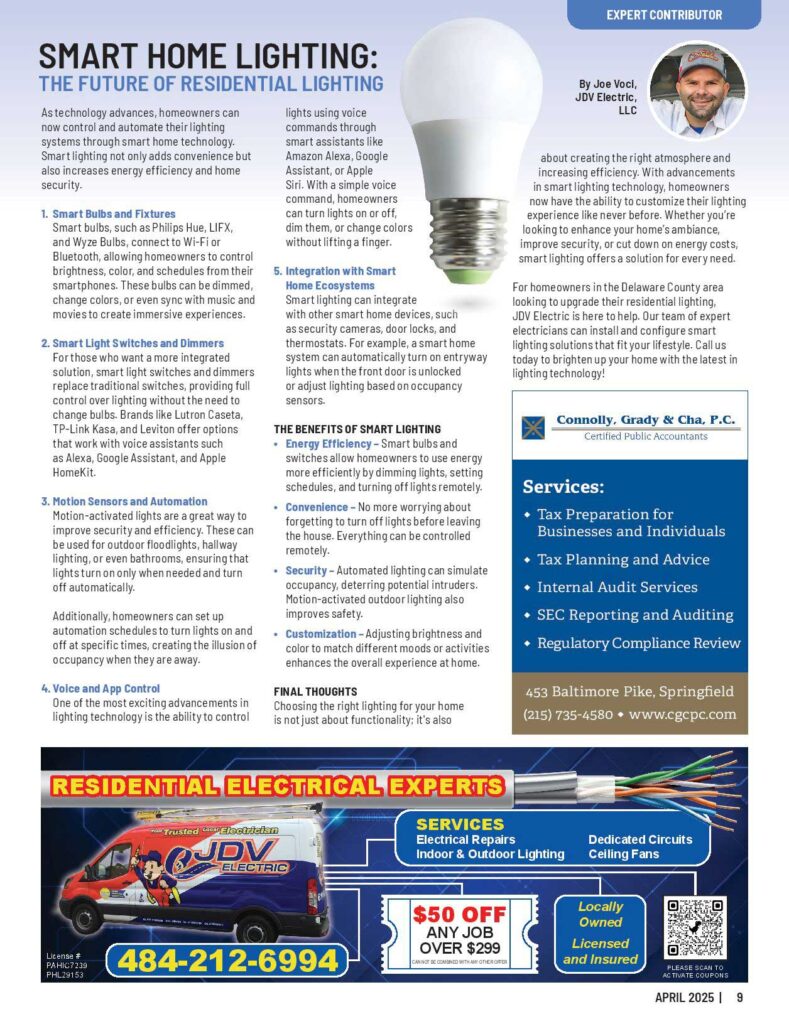The Future of Residential Lighting


By Joe Voci, JDV Electric, LLC
Did you know that you can charge your electric vehicle (EV) battery with the standard outlet? In the world of electric vehicles, this type of charging is called Level 1 charging. The charging station for this Level 1 charging is usually supplied with the car; therefore, all-electric vehicle owners have access to it.
Now, we know what you’re thinking: “All I need to charge my EV at home is a household outlet? Easy peasy!”
Just a moment! There’s more to know about electric car charging speed and how to use Level 1 charging.
Although using a Level 1 charging station is the most straightforward way to start charging your EV at home, it is generally only used for emergencies and roadside troubleshooting. Most of the time, it stays in the trunk of the vehicle. Here’s why:
Level 1 charging stations are 120-volt plugs, and:
You now understand that if you want to take advantage of a faster charging speed at home, you will need to equip yourself with a more efficient charging station.
The fastest way to charge your electric car at home is with a Level 2 charging station. It can be installed on the side of your house, in a garage or in your private parking lot. It also needs to be wired directly into your main home electrical panel; a licensed and insured electrician should wire it.
Level 2 charging stations have a 240-volt plug, and:
A Level 2 charging station is, therefore, a key element in truly enjoying all the advantages of charging at home for its practicality, ease of use, reliability and savings!
For more info contact Joe Voci of JDV Electric, LLC by phone at 610-364-5099 or email: joe@jdvelectric.com
Website: jdvelectric.com
By Joe Voci JDV Electric, LLC
Electricity is an essential part of our daily lives; it can also be dangerous if not used and maintained properly. Electrical accidents can cause serious injury or death, so it is important to take electrical safety in your residence seriously. Here are some of the key ways to protect your home and family from electrical hazards.
Smoke detectors are crucial for protection from fires caused by electrical faults. Install them on every level of your home and in every bedroom, test them regularly to ensure they work correctly, and replace the batteries at least once a year.
Electrical appliances and fixtures like lamps, power strips and extension cords that are certified and approved by a recognized safety organization are tested and designed to meet strict safety standards and are less likely to cause electrical hazards.
Overloading circuits can cause electrical fires and damage appliances. Avoid using too many appliances on one circuit and never plug in too many extension cords or power strips. Consider installing additional circuits to use multiple appliances in one area.
Water and electricity do not mix. Keep electrical cords away from water sources such as sinks, bathtubs and pools. Ensure outdoor outlets are weather-resistant and protected from rain and moisture.
GFCIs are designed to prevent electrical shocks and should be in all areas of your home where water is present, such as kitchens, bathrooms and laundry rooms. They detect imbalances in the electrical current and shut off the power if a fault is detected.
Electrical repairs should only be performed by a licensed electrician; licensed electricians have the expertise and knowledge to ensure that your electrical system is safe and up to code. Attempting to fix electrical problems yourself can be dangerous and/or cause further damage.
Damaged cords and plugs can cause electrical shocks and fires, so replace frayed or cracked cords immediately.
Protect your appliances from power surges and spikes. Surge protectors are particularly important for expensive devices such as computers, televisions and home theater systems.
AFCIs are designed to recognize dangerous arcs in your wiring and immediately break the flow of electricity. They prevent your electrical system from becoming an ignition source for a fire. The life-saving technology and superior design of AFCI protection, now standard in new construction, has been refined to also reduce unwanted nuisance tripping due to interference from electrical devices or appliances. Arc fault receptacles and circuit breakers provide fire and electrical safety protection.
In conclusion, electrical safety is an important aspect of home maintenance that should not be overlooked. By following these tips, you can help protect your home and family from electrical hazards and ensure that your electrical system is safe and up to code.
For all your Electrical needs contact Joe Voci at JDV Electric, LLC at 610-364-5099 or joe@jdvelectric.com